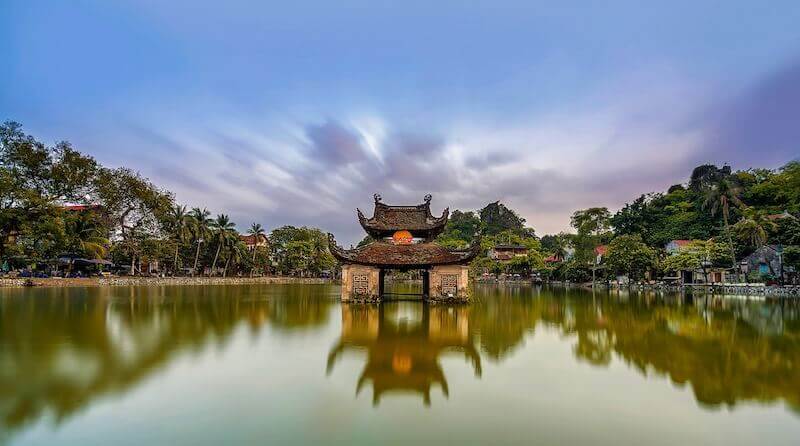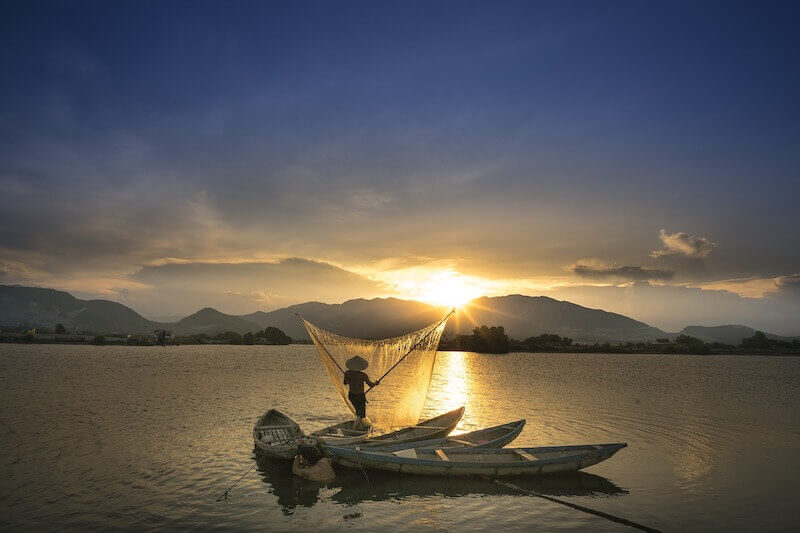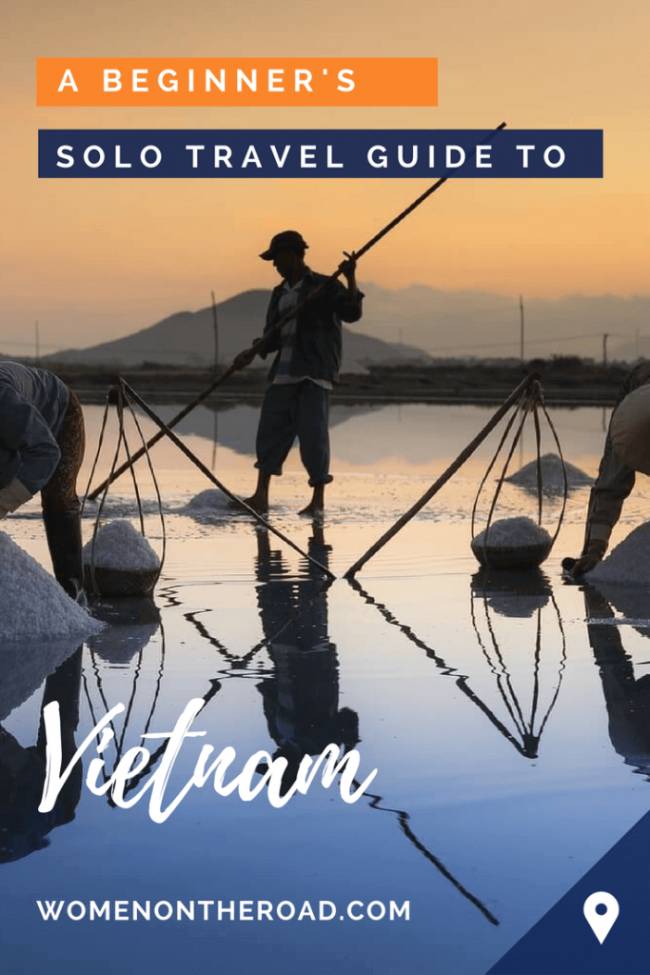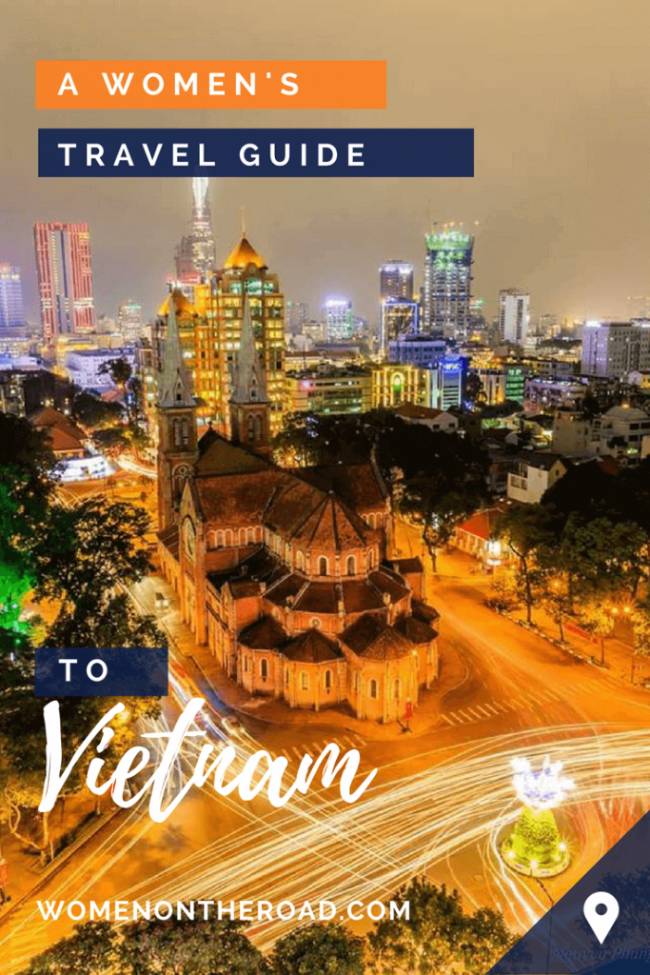Vietnam has always been a special place for me. Whenever I visit, I enjoy the culture and people, which make the country what it is.
Eating healthy, delicious cuisine and exploring the country in an old but newly bought motorbike are some of the reasons I fell in love with Vietnam.
It is a remarkable place. One moment, you can be in a countryside where people catch fish and harvest rice while honoring their old traditions. The next moment you can be surrounded by tall buildings on a busy street, where vendors sell fresh snacks and meals and motorbikes crowd the roads.
Like many countries in Asia, Vietnam’s rich culture overlays modern technologies and innovations, a duality it struggles with.
Eclectic and charming, there is an obvious reason Chef Anthony Bourdain once referred to his visit as “meeting the love of your life for the first time”. From the Annam Cordillera’s rich green highlands to Sapa’s snowy mountains to Halong Bay’s limestone karst, the diversity ofthe country’s geography is astonishing. This diversity is also reflected in its people, made up of more than 50 different ethnic groups, each with their own dialect and traditions.
Part of this diversity is historical. From 111 BC until 1975, the Mongols, Chinese, Japanese, and French have tried to occupy Vietnam with different levels of success. What these invaders left behind can still be seen in the architecture of many structures in the country today.



Do you need a visa for Vietnam? Click here to find out!
IS VIETNAM SAFE FOR SOLO FEMALE TRAVELERS?
Women who want to travel solo in Vietnam will face no particular problems as long as they use common sense. Catcalling may occur but is an uncommon occurrence so the usual safety measures should be observed when walking alone, especially at night.
Serious crime is minimal, but petty crime is common so be careful with your belongings and keep your important documents with you at all times, and your bag always within sight.
Petty crime is plentiful, as are scams – just keep an eye out for them. Other than that, there is little to worry about on the safety front.
GETTING AROUND VIETNAM
The most common way to get around Vietnam is still by road. There are plenty of modern buses running up and down Highway 1, along the country’s north-south spine. But they are mostly used by Vietnamese, so don’t expect the driver to speak English or to drop you off at the nearest sight. Timetables don’t usually exist and bus stops are hard to find.
You can also rent a car, usually with a driver, but the mad driving style makes road accidents common. While Vietnamese are working hard to improve the quality of their roads, many of them are still very bad, especially in rural areas. Many drivers don’t respect safety standards or the rules of the road, making road travel even worse.
If you want to enjoy the beauty of Vietnamese countryside, a far better option is the train. You’ll ride by stunning ocean views, mountain ranges, tunnels, and interesting buildings. The fastest express train from Ho Chi Minh City to Hanoi and vice versa is provided by the Reunification Express, which takes 30 hours.
Given the size of the country your best bet may be to fly. Vietnam Airlines, VietJet Air and Jetstar offer domestic flights to most major cities including Ho Chi Minh City, Hanoi and Da Nang.
In town, you’ll be spoilt for choice. The cyclo, a three-wheeled bicycle taxi, is used mostly for tourists, but you can always find a motorcycle taxi anywhere. Normal taxis are common but even the ones with meters may have elaborate scams designed to make you pay more. Many people prefer downloading the Uber or Grab app and ordering a cab that way.
If you happen to be a cyclist, you’ll do well in Vietnam, especially if you stay off the more crowded roads.
PLACES TO GO IN VIETNAM
It has best of both worlds, tradition and modern technology. People are also extremely friendly. At first, foreigners may mistake their silence for rudeness. But it’s worth noting that not many locals, especially older generations, speak English so it may take some time for them to open up to you.
In the end, what convinced me to stay here longer than the one month I had originally planned is the country’s beauty.
However long you plan to stay, here are a few examples of the best this country has to offer.
Hanoi, City of Lakes
The country’s capital, Hanoi, is a compelling city, distinctive in its splendor. Hanoi is where you want to be if you are looking to experience the country’s best urban landscapes. In the midst of the beautiful tree-lined roads, you can wander around the busy markets, enjoy a cup of coffee at picturesque cafés and check out the sites – the Saint Joseph Cathedral, Presidential Palace, or Grand Opera House. Hanoi is also known for its rivers, mountains and, of course, lakes.
Tip from Mechthild S.F.: “I loved just wandering in Hanoi and discovering small old temples tucked between houses – beautiful, ‘living’ temples.”
Tip from Sandra S.: “Don’t miss the Women’s Museum in Hanoi. It contains stunning exhibits and has a wealth of information about all aspects of the lives, cultural practices and traditions of Vietnamese women.”
Tip from Linda D.: “I thought Hanoi would be utilitarian and plain but it was so charming and much more developed than one might expect. The hotels, shopping, street markets, food and people were amazing and so welcoming!”
The Mekong Delta, Vietnam’s rice bowl
Also known as “The River with Nine Dragons,” the Mekong Delta has to be on your Vietnam itinerary. It is one of the world’s longest rivers and you’ll see people living their daily lives along its shores,. Watching people plant fruits and wet rice, create handicraft or move their houseboats between fields to feed their cattle or fish during flood season is part of experiencing the Mekong Delta.

Ed. Note: The Mekong is under serious threat and the Delta may be unrecognizable a few years from now. Major dams are going up along its length, with inevitable consequences downstream. For an in-depth look at the entire dam issue, read this article in Slate. Or if you’d prefer, here’s a quick video that covers the story and gives you the facts.
Dalat: The Little Paris
Dalat is a mountain town known for its cultivation of fruit and vegetables, with flowers and strawberries among its most popular produce. A unique feature of Dalat is its French colonial-style architecture. It even has an old train station inspired by the one in Deauville, France, and a radio antenna that looks like the Eiffel Tower.
Tip from Dawn I.: “Lots to see in Dalat – fewer tourists so a more genuine experience of Vietnam, fabulous flowers and a temperate climate providing respite from the heat.”
Halong Bay: Descending Dragon
Halong literally means “Descending Dragon”, a great metaphor for the many unique rock formations found on the 1,969 islands of this bay. Listed as a World Heritage site by UNESCO, it is hugely popular and is often used to promote Vietnam’s beauty. One of the most beautiful places to see in Vietnam, Halong Bay is also home to some of the best beaches of Vietnam. Keep in mind it can get very crowded here, so if possible, time your visit wisely, away from the summer or winter high seasons. The start of low season is the month of May when the summer starts and temperature starts rising.

Tip from Starr S.: “Halong Bay is beautiful once you get past the main bay and if you can get away from the crowds.”
Sapa: The Tonkinese Alps, a true Vietnam adventure
If you love hiking, you will love the hills of Sapa in northwestern Vietnam, with their spectacular views of jungle, rice terraces and mountain ranges. To make things easier, make sure to hire a guide!
Tip from Sandra S.: “I recently visited Ho Chi Minh City and stumbled across the Museum of Fine Arts and its beautiful colonial style buildings with stained glass windows and ornate lift cages. They house a collection of works from Vietnamese artists from the 1970s to today.”
Tip from Natasa K.: “The most beautiful was Hoi An, a little town on Vietnam’s central coast. Protected by UNESCO, this emerald has it all: amazing people, beautiful beaches, excellent food and many old buildings, monuments and local crafts.”
NOW FOR THE BEST PART: WHAT SHOULD YOU EAT?
Vietnamese cuisine is well known and loved around the world so eating this food at its source is an exciting adventure. While most Vietnamese food is delicious, here are my personal top picks.
Of course, this list is not worth writing without Pho! Stalls selling Pho can be found everywhere in Vietnam. This simple staple is made of fresh rice noodles, a salty broth, some local herbs, and beef or chicken.
My favorite snack is Banh Mi, a sandwiched clearly influenced by the French baguette, which the Vietnamese have somehow transformed into something extraordinary. Depending on where you are in the country, you’ll find different varieties of Banh Mi. In the north, it usually contains fat and protein – often margarine and paté. Southern versions are more colorful consisting of cold cuts, cheese, sausage, fresh cilantro, fried egg and chili sauce.
Ca Phe Trung, also known as “egg coffee,” is a drink I also treat as a dessert. The creamy, meringue-like egg-white froth floating on the thick Vietnamese coffee makes for a delightful drink at any time of day. Luckily, this isn’t hard to find at all.



THREE THINGS YOU MUST ABSOLUTELY PACK FOR VIETNAM (AND WHAT TO WEAR)
Remember Vietnam’s climate is tropical and you’ll need things that are light. A sarong is always a good idea but you can easily buy those once you get to Vietnam. In winter, in the highlands, you’ll need some warmer clothes like a sweater and jacket but otherwise, just wear modest Western clothes.
That said, there are a few things you should pack with you.
The first are sanitation supplies, especially tampons, which – as in many countries in Southeast Asia – are not popular. Pads, on the other hand, are easy to find.
You’ll also need a universal travel adapter because Vietnam probably uses a different type of plug from you. It can be confusing: you’ll find a two-pronged American-type plug, a two-prong European plug, and a three-prong round plug of the kind found most often in parts of Africa and South Asia – these will be the most common in new or upmarket hotels.
Finally, you’ll need sunblock – unless you want whitening agents in yours, which are common in cosmetics across Southeast Asia.
LIVING IN VIETNAM
Living in Vietnam was not a hard decision for me. After moving around the world for two years, I started to feel the need to settle down in one place for a while. I was looking for a place with an interesting culture, healthy food, and an affordable but high-quality lifestyle. Vietnam met all those requirements. It was also safe. And beautiful. And diverse, especially the food.
Lifestyle gets high marks in Vietnam. I can easily find what I need and my money stretches a long way. If you live on a budget like me, you can easily live on $600 to $900 a month, depending on where you are. Ho Chi Minh can be a little bit more expensive though (from a developing country perspective) where the average cost of living is around $750 to $1,400 a month.
Obtaining a visa is simpler now. Depending on how long you are planning to stay, you can either apply online for a tourist visa that allows you to stay in the country for 30 days, which you can extend for up to 90 more days. Or you can renew it for you to be able to get a new stamp, that gives you a staying length that is valid for a maximum of 3 months.
Please don’t forget your travel insurance! Women on the Road recommends World Nomads if you’re under 66 (70 in some countries). If that birthday has come and gone, click here for travel insurance recommendations that cover you at any age.
VIETNAM TRAVEL TIPS AND RESOURCES
- Here is a brief overview of Vietnam’s history, and a closer look at the Vietnam War specifically.
- This BBC News profile of Vietnam provides a quick snapshot of the country.
- If you’re planning on visiting Halong Bay, taking a full-day cruise is a great way to see the bay
- Boat is also the best way to see the Mekong Delta
- In the Mekong Delta, this intimate boat tour
- A good site for the expat community in Hanoi can be found here
- Fly Vietnam is a convenient website for your domestic flight reservations
Guest Contribution by Alice Ross. Alice is a former bank manager who quit her job to see the world, spent two months visiting and living in Vietnam. She is the founder of For Travelista.
PIN THESE PICTURES AND SAVE FOR LATER!



